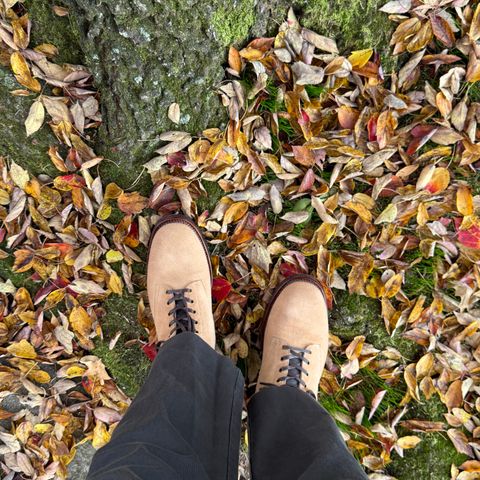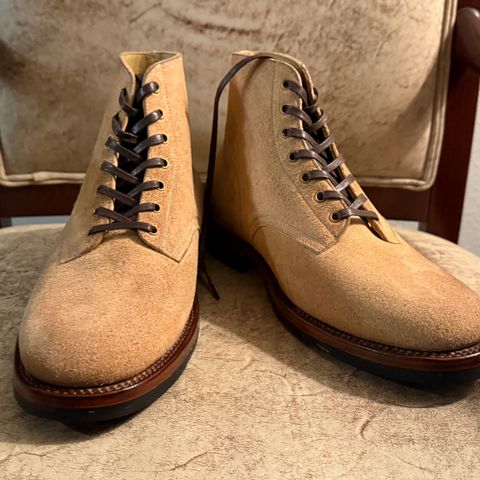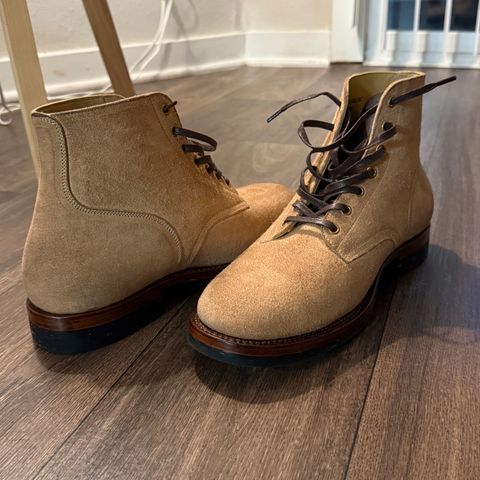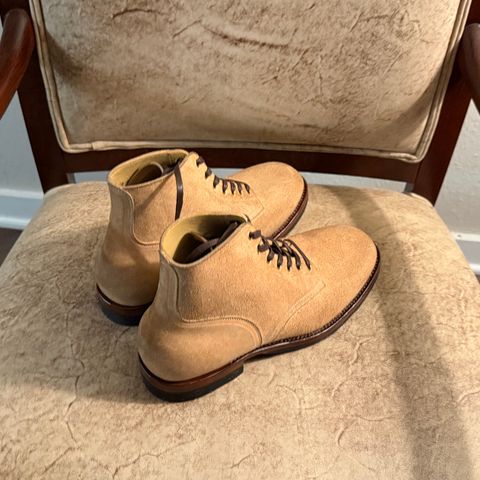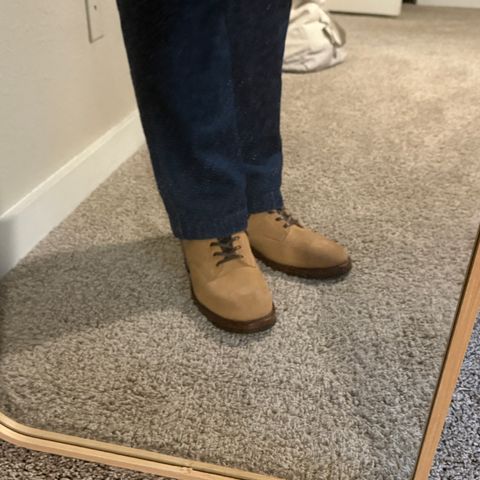About
Conceria Cloe Reverse Horsebutt is a vegetable-tanned horse leather produced by Conceria Cloe, an Italian tannery in Ponte a Egola, Tuscany. The leather is distinguished by its use of the flesh (reverse) side as the exterior surface rather than the traditional grain side, creating a distinctive aesthetic characterized by residual traces of shell cordovan bleeding onto the fibers.
About
Conceria Cloe Reverse Horsebutt is a vegetable-tanned horse leather produced by Conceria Cloe, an Italian tannery in Ponte a Egola, Tuscany. The leather is distinguished by its use of the flesh (reverse) side as the exterior surface rather than the traditional grain side, creating a distinctive aesthetic characterized by residual traces of shell cordovan bleeding onto the fibers.
The leather is cut from the hind section of the horse hide, positioned as a layer just above shell cordovan. Conceria Cloe processes this material using traditional Tuscan vegetable tanning methods with natural tannins extracted from trees and plants. The reverse side exhibits pronounced grain irregularity and a chaotic, irregular visual character that varies from areas of shell cordovan to suede and glazed sections.
Material and origin
Reverse horsebutt is sourced from the hind section of the horse hide, cut as a layer positioned just above shell cordovan. This anatomical location yields leather with dense fiber construction that contributes to its durability characteristics.
The reverse (flesh) side of the hide becomes the exterior surface, distinguishing it from traditional leather applications that utilize the grain side. This reversed orientation exposes residual traces of shell cordovan that bleed onto the fibers, creating the leather's characteristic irregular appearance. The small shell cordovan remnant area per hide restricts availability of reverse-cut material to specific applications such as bifold wallets and certain footwear uses.
Tanning process
Conceria Cloe, located in Ponte a Egola in the Tuscan leather district, produces the leather using complete vegetable tanning. The process employs natural tannins extracted from trees and plants, following traditional methods developed over centuries in the Tuscany region.
Tuscan vegetable tanning requires slow passage of time as an essential component of production, combining ancient recipes with modern technology. The process contains no toxic substances including azo-dyes, nickel, PCP or chrome VI. This tanning method produces leather that is naturally biodegradable at the end of its lifecycle.
The tannery uses approximately 100 steps in its complete vegetable tanning process, transforming raw horse hides primarily sourced from Poland and Venezuela into finished leather.
Characteristics
The leather presents as very soft with subtle grain variation and a dry, matte touch. Dense fiber construction combines with soft, gummy, stretchy texture, making it comfortable for wear while maintaining structural integrity.
The material exhibits pronounced grain irregularity with what has been characterized as a chaotic, irregular visual character. Reverse cuts showcase traces of shell cordovan alongside suede and glazed sections, with appearance varying from areas of shell cordovan to suede and glazed/smooth sections. The leather is described as having an imperfect, washed out aesthetic.
When fully vegetable tanned, the material demonstrates extreme flexibility and resistance with a very distinctive sheen and transparency. The shell layer contribution creates an incredibly tight grain and creasing pattern, particularly noticeable at flex points in footwear applications.
Aging and patina
The leather develops a lustrous patina with an almost metallic sheen over time. High oil content makes it highly prone to patina development, with users reporting aggressive and interesting patina evolution during wear.
Natural tannins used in the vegetable tanning process impart warm tones to the leather, which tend to intensify with the passage of time and daily use. This characteristic aging process contributes to the material's appeal among heritage footwear enthusiasts who value visible wear patterns and character development.
Use in heritage footwear
Sagara, an Indonesian bootmaker, incorporates the leather in their Imperial IV boots and Legatant models. The material is marketed as Cloe Horserump - Superlux in Sagara's product specifications. Users have described the leather as "beautiful with some awesome grain" and note that it produces "serious, serious stuff, really nice and thick but with a uniquely soft hand."
Meermin, a Spanish footwear manufacturer, uses the leather in handmade workboots featuring 270° hand-sewn chained Norvegese construction. The boots are fully hand-lasted with vegetable tanned leather insoles and midsoles. Meermin markets certain variations as Superlux Col 1 Horse Butt.
The leather's tight grain and creasing characteristics make vamp creases barely visible even after extended wear. The material tends to pick up nicks and scuffs during use, leaving lighter marks when damaged, though these can be addressed with light buffing.
References
"Horse Culatta - Cloe S.R.L". Mill Handmade. Retrieved October 23, 2025.
"Vegetable-tanned leather". Consorzio Vera Pelle Italiana Conciata Al Vegetale. Retrieved October 23, 2025.
"Legatant Old - Cloe Horserump - Superlux". Sagara Bootmaker. Retrieved October 23, 2025.
